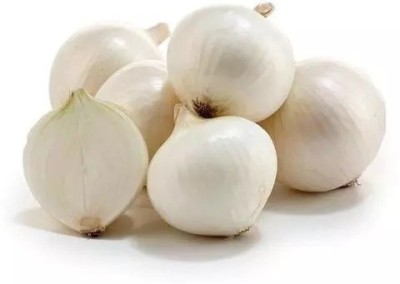WATIKA Organic White Onion Seed(3000 per packet)
Quick Overview
Product Price Comparison
Planting and Care for OnionSowing Onion SeedsTemperature is a factor in onion seed germination.Though germination usually takes 7-10 days, soil temperature affects this process.For example, if the soil temperature is colder, onion seeds can germinate more slowly ŌĆō up to two weeks.On the other hand, warm soil temperatures will initiate onion seed germination in as little as four days.Drill three or four 1/2-inch deep drainage holes in the bottom of the grow bags and fill them with three inches of potting soil.Sprinkle the onion seeds evenly over the dirt, between 1/4ŌĆ▓ŌĆ▓ to 1/2ŌĆ▓ŌĆ▓ apart.Cover the seeds with a light sprinkle of potting soil and thoroughly water them in.After planting the seeds, place the grow bags in a covered, shady area of the terrace garden.When the temperatures and day length are just right, the onion seeds inside the grow bags will begin to sprout.At that point, you should begin monitoring the humidity level inside the grow bags and watering your seedlings as needed.Growing OnionNow, choose a sunny spot in your terrace garden.If your garden is shady, choose varieties with short day lengths to promote bulb growth.Onions thrive best in medium-rich, well-draining soil. To increase drainage, amend clay soil with organic matter (e.g., compost) or potting soil.Add a healthy, gentle, slow-release fertilizer to the soil, such as this organic all-purpose mix.Additionally, it is a good idea to inoculate the soil with mycorrhizae, either directly or by watering with a mycorrhizae solution following transplantation.Mycorrhizae are beneficial fungi that aid in the production and absorption of nutrients in all plants. However, onions are particularly reliant on root-mycorrhizal associations for the uptake of phosphorus required for the development.Due to the onions' shallow root systems, it is essential to keep them well-watered. Inconsistent irrigation results in smaller onion bulbs.Mulching the onions with a layer of mulch is an ideal way to keep the soil from drying out.Soggy soil or standing water significantly raises the likelihood of onions rotting.When onions exceed the size of a pencil or begin to shape bulbs, they are ready to harvest.Harvesting OnionOnce the onion bulbs have formed, you can harvest them anytime you want to use one.When the main stalk becomes small, thin, and begins to flop over, the onion is mature and ready to harvest.Additionally, the greens will begin to turn yellow or brown, especially at the tips.Pull the plants up when the time is right, but leave them lying on top of the soil for a day or two to dry. Onions are prone to bruising, so harvest with care. Avoid puncturing the skin or flesh unintentionally ŌĆō they may deteriorate during storage if harmed.Precautions while growing onionFertilize every few weeks with Azospirillum Nitrogen Fixing Biofertilizer to ensure Healthy bulbs. When the onions have pushed the soil away, and the bulbing process has started, stop fertilizing them. Take care not to reintroduce soil forced away from the onions. The bulb must appear above the soil surface.Onion plants, in general, do not need daily watering when mulched. Each week, about an inch of water (including rainwater) is sufficient. Only if you require sweeter onions should you add additional water.Also, with less water, onions appear good. Water them regularly, including during drought conditions.


